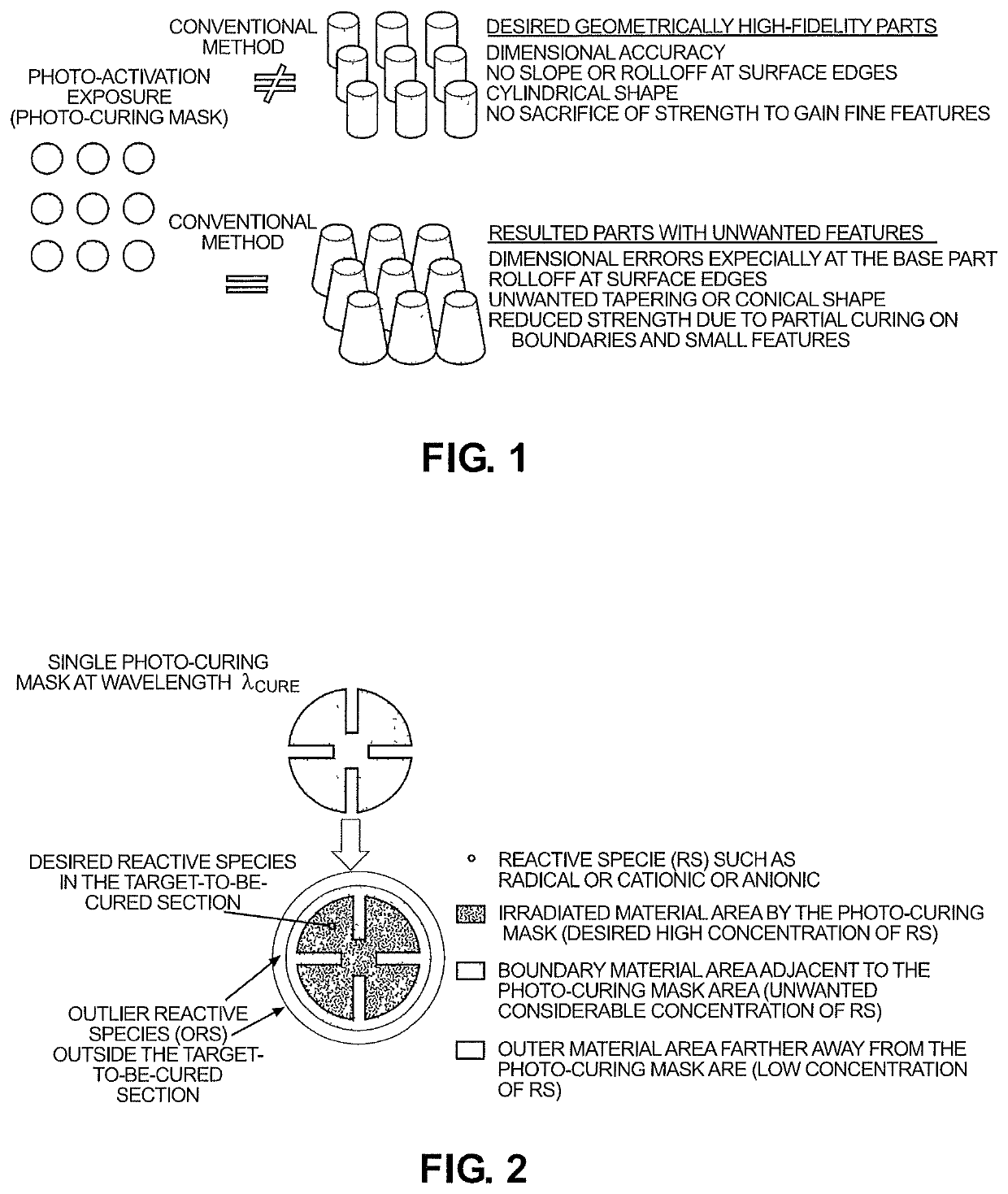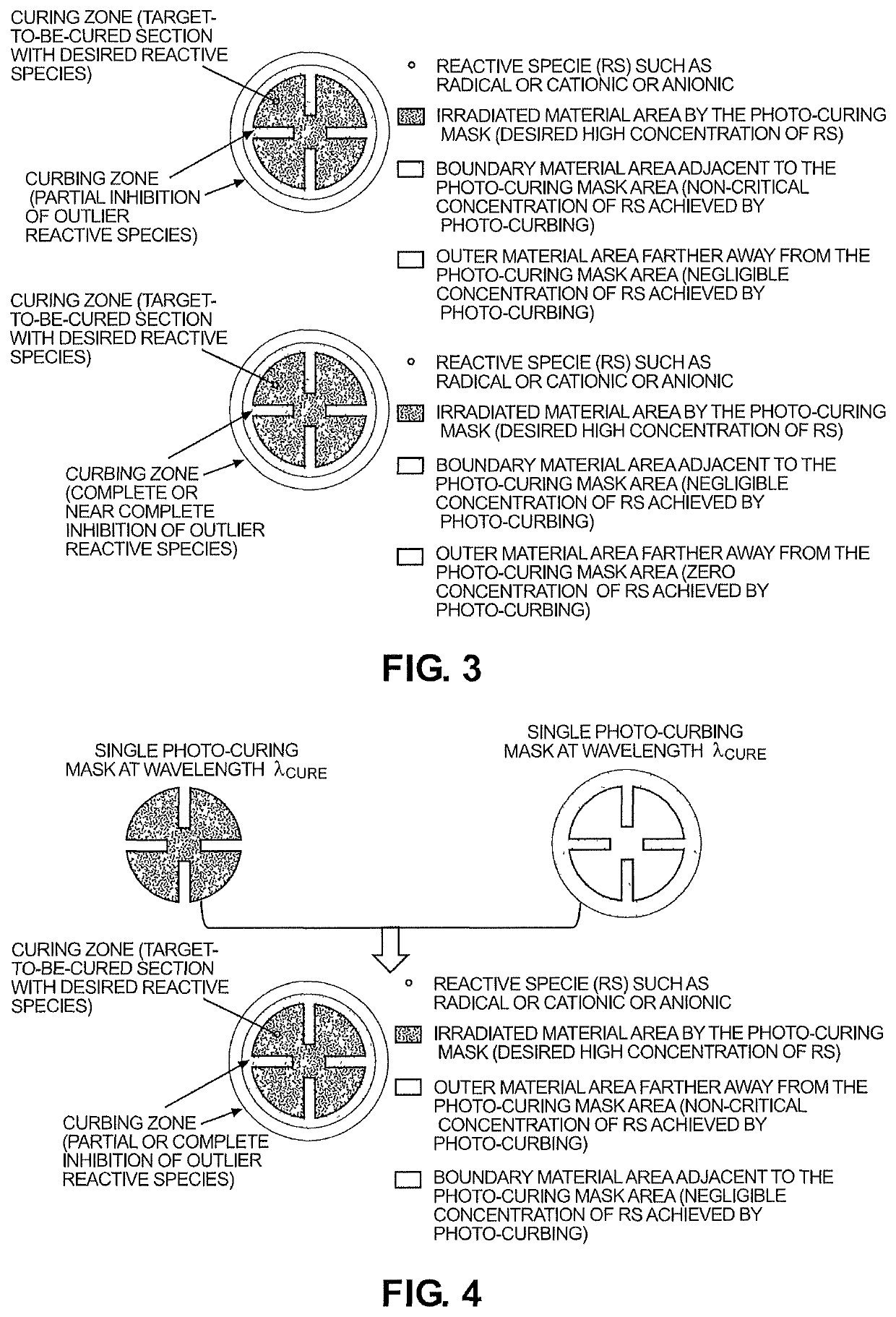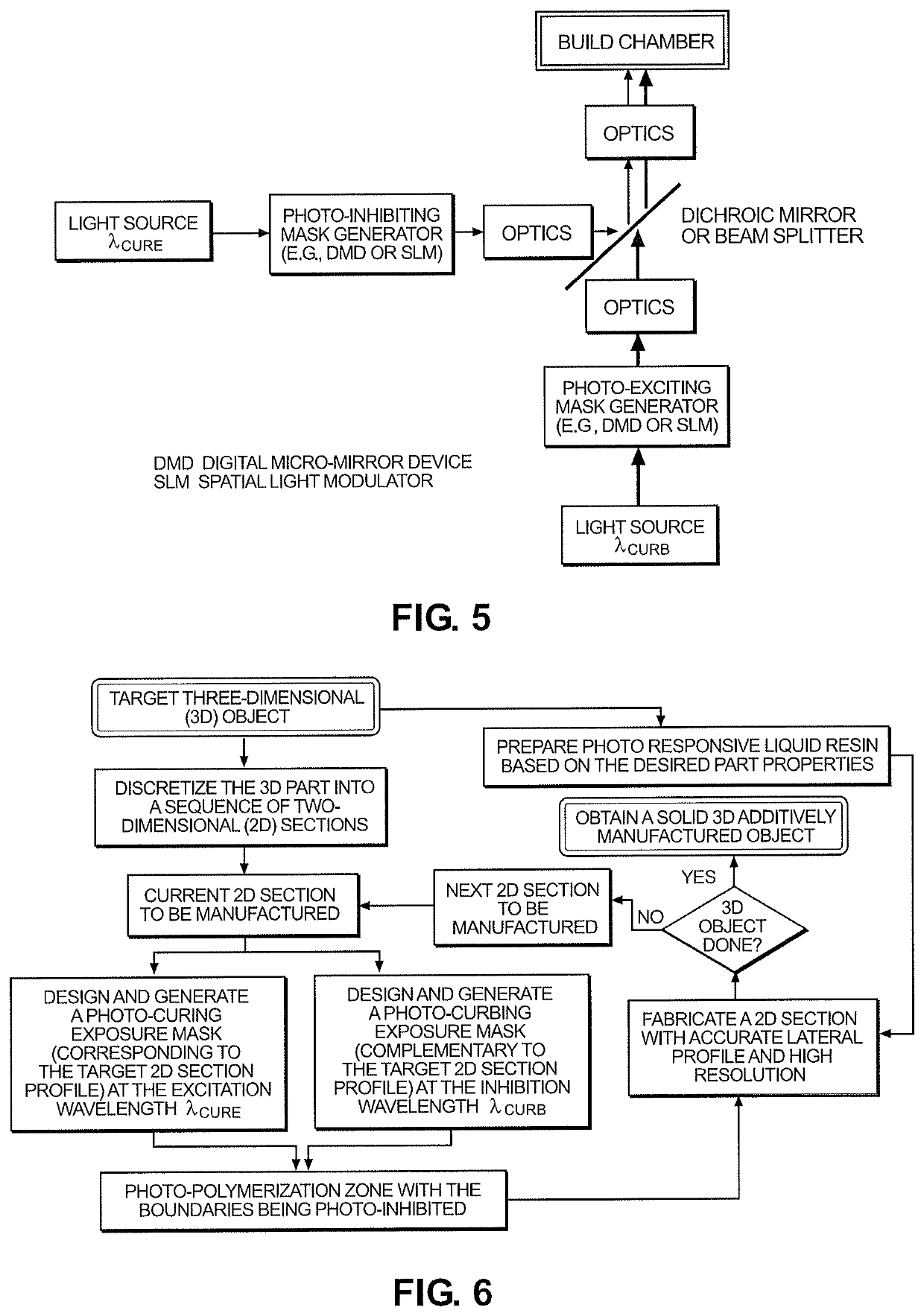Systems and methods for photopolymerization based additive manufacturing enabled by multiple-wavelength irradiations
a photopolymerization and additive manufacturing technology, applied in the field of additive manufacturing, can solve the problems of limited scalability, high equipment cost, slow build speed,
- Summary
- Abstract
- Description
- Claims
- Application Information
AI Technical Summary
Benefits of technology
Problems solved by technology
Method used
Image
Examples
Embodiment Construction
[0058]The following description, taken in conjunction with the referenced drawings, is presented to enable one of ordinary skill in the art to make and use the disclosure and to incorporate it in the context of particular applications. Various modifications, as well as a variety of uses in different applications, will be readily apparent to those skilled in the art, and the general principles, defined herein, may be applied to a wide range of aspects. The present disclosure is not intended to be limited to the aspects disclosed herein. Instead, it is to be afforded the widest scope consistent with the disclosed aspects.
Concept and Method of SPA2CurbCure of the Present Disclosure / Outlier Reactive Species
[0059]In photopolymerization, photo induced reactive species (RS) could be free radicals, cationics or anionics, which can crosslink monomers and or oligomers into final solid polymer. All these reactive species outside the target to-be-cured zone are called as outlier reactive specie...
PUM
| Property | Measurement | Unit |
|---|---|---|
| Wavelength | aaaaa | aaaaa |
| Resolution enthalpy | aaaaa | aaaaa |
Abstract
Description
Claims
Application Information
 Login to View More
Login to View More - R&D
- Intellectual Property
- Life Sciences
- Materials
- Tech Scout
- Unparalleled Data Quality
- Higher Quality Content
- 60% Fewer Hallucinations
Browse by: Latest US Patents, China's latest patents, Technical Efficacy Thesaurus, Application Domain, Technology Topic, Popular Technical Reports.
© 2025 PatSnap. All rights reserved.Legal|Privacy policy|Modern Slavery Act Transparency Statement|Sitemap|About US| Contact US: help@patsnap.com



